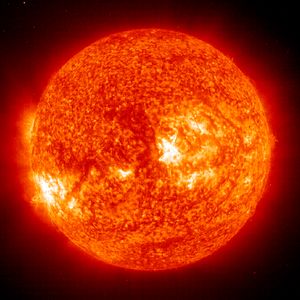So happy 2008 everyone. Yes! We, the Criers have started the preparations for this upcoming concert set and we're pumped! It's an awesome program of music and our guest artist, Alexander (Sasha) Korsantia is the BOMB. The cool thing about having your own orchestra is that you play music YOU want to play. Yeah we're just a chamber orchestra, but there is so much GREAT music written for this size a band. You just have to hear it, then you'll believe in it.
The post right before this one, Jesse makes a heartfelt shout out about the pieces being performed...Come see these shows and stick around afterwards to find out what other bands we have on our iPod playlist. I found this article while reading something about this year's playoff football on ESPN.com. It's so unrelated, it's just hilarious. But it gives you a lot to think about and chew on. Written by Gregg Easterbrook for the column, Tuesday Morning Quarterback.
" Space: The Saudi Arabia of Electricity: According to a recent estimate by the Department of Energy, human society is using about 15 terawatts of artificially generated energy per year; a terawatt is a trillion watts. The sun generates about 12 quadrillion terawatts per year -- about 800,000,000,000,000 times as much energy as made on Earth.
[+] Enlarge

AP Photo/NASA
The sun makes 800,000,000,000,000 times as much energy as humanity uses -- all we need to do is tap a little.
Why do I mention this? First, this is Tuesday Morning Quarterback: I don't have to have a reason. But if you're worried about how society can solve its power needs while simultaneously breaking the fossil fuel habit -- the World Bank estimates that, even assuming big improvement in efficiency, global energy production must triple by 2050 -- think skyward. Solar cells are getting cheaper, but may always be limited to applications such as rooftop converters in places like Arizona that rarely experience cloudy weather. The real promise of solar power is up in space, where the sun always shines and the energy value of photons is much greater than on Earth's surface. (Passing through the atmosphere uses up most of the energy in sunlight.) It seems likely, though not certain, that huge solar collectors in orbit could supply all the world's power needs by capturing the intense form of sunlight found in space, then beaming the energy down to Earth via lasers or microwaves. Physicists at a recent Washington meeting estimated that solar collectors in orbit, using lasers to transmit power to converters in the North African desert, could supply all of Europe's energy at a price competitive with current power generation and without carbon emissions. A world of space-based energy would not need coal-fired or nuclear power plants, and there would be sufficient electricity available so that hydrogen could be made from seawater to power our cars and airplanes. Homo sapiens could kiss the greenhouse gas issue goodbye.
Needless to say, building orbital solar power collectors would be hugely expensive -- although once the collectors were completed, operating costs would be relatively low because no fuel is required and no waste is made. Nations would need to cooperate on positioning the orbital systems and the ground receptors. There's some chance that zapping powerful lasers or microwave beams through the atmosphere would affect the weather. And extremely expensive power towers floating in space would, sadly, provide tempting military targets. Already, the Pentagon's National Security Space Office has quietly told lawmakers it would like to build a smallish orbiting proof-of-concept solar power station that would be used to beam energy down to deployed U.S. armed forces units. The Army and Marines have countless diesel-electric generators set up in Iraq and Afghanistan; if deployed forces could draw their electric power from a beam from space, this would be preferable. But if the first space solar generator is built to support the U.S. military, this could get the whole idea off on the wrong foot, making space solar power towers feel like valid military targets.
Anyway, TMQ finds it reassuring that there are potential energy solutions that involve vast amounts of power without any greenhouse gas emissions, fissile materials that might be stolen, or atomic byproducts that must be buried. Plus, return to those sun statistics. Our star generates 12 quadrillion terawatts of energy per year, radiating in all directions, so that an estimated 100,000 terawatts per year will fall on Earth -- warming our world, causing plant growth and making life possible. Some 100,000 terawatts end up here -- the rest streams off into the void. Thus 99.999999 percent of the energy generated by the sun is wasted, except perhaps for offering career opportunities for alien astronomers and their postdocs in other parts of the galaxy. You think man wastes energy -- think about the sun!"
Alrighty then. Come see our January concerts!
 One of the Criers, Blaise Dejardin, decided he was unable to perform with A Far Cry on the current set of concerts because he was preparing for an audition for an open spot in the Boston Symphony cello section.
One of the Criers, Blaise Dejardin, decided he was unable to perform with A Far Cry on the current set of concerts because he was preparing for an audition for an open spot in the Boston Symphony cello section.



